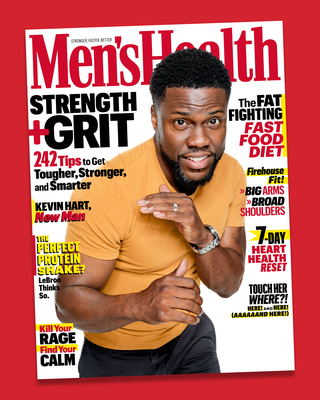Give Your Calf Muscles Some Much-Needed Attention With This Workout
What do internet trolls, movie ratings, and our calf muscles have in common? Most of us pay them no mind.
But, according to certified strength and conditioning coach Paul Sklar, it’s time to give the lower body’s forearm some love. Why? Because your calves won’t get stronger if you don’t train them, and stronger calves translate to increased power, strength, and overall athletic ability.
Calf exercises also help strengthen the ankle complex, which naturally weakens as you age, Skalr says. And “if you don’t strengthen it and keep it mobile it will most likely lead to issues later,” he writes in an Instagram caption of a tough two-part calf workout.
Luckily, “[it] doesn’t take much time or equipment to work [your calves],” he continues.
For the workout, you’ll complete 10 reps of two different movements—the straight leg calf raise and the fixed bent knee calf raise—for 5 rounds, back-to-back.
Whether you use the leg of a bench, a weight plate, or a Smith machine, both movements are executed almost exactly as they sound. For the straight leg calf raise, you’ll stand on the balls of your feet on a slightly elevated platform. Then, keeping your legs straight, core tight, and glutes squeezed, you’ll lower your heel until it taps the ground. Then, press back up. This movement targets the gastrocnemius, which is the muscle at the top of your lower leg.
The bent-leg calf raise is similar—but instead of stranding on your toes with straight legs, you’ll bend at the knees and stay in that position as you lower your heels to the floor. By bending your knees, you shift the work from the gastrocnemius muscle to the soleus, the larger muscle which lies just beneath the gastrocnemius.
You’ll notice that Sklar is wearing a weight belt to load the movement. But if you’ve been short-changing your calves for a while, try this routine as a bodyweight superset to start.
You’ll also notice that the trainer doesn’t make any promises that you’ll finish the superset with newly massive calf muscles. It’s hard to say how much bigger and more shapely your calves will get, because as Sklar acknowledges, “calf development is based highly on genetic predisposition, so results will always vary.”
But hey, small, strong, developed muscles are always better than big, weak muscles.

Source: Read Full Article
